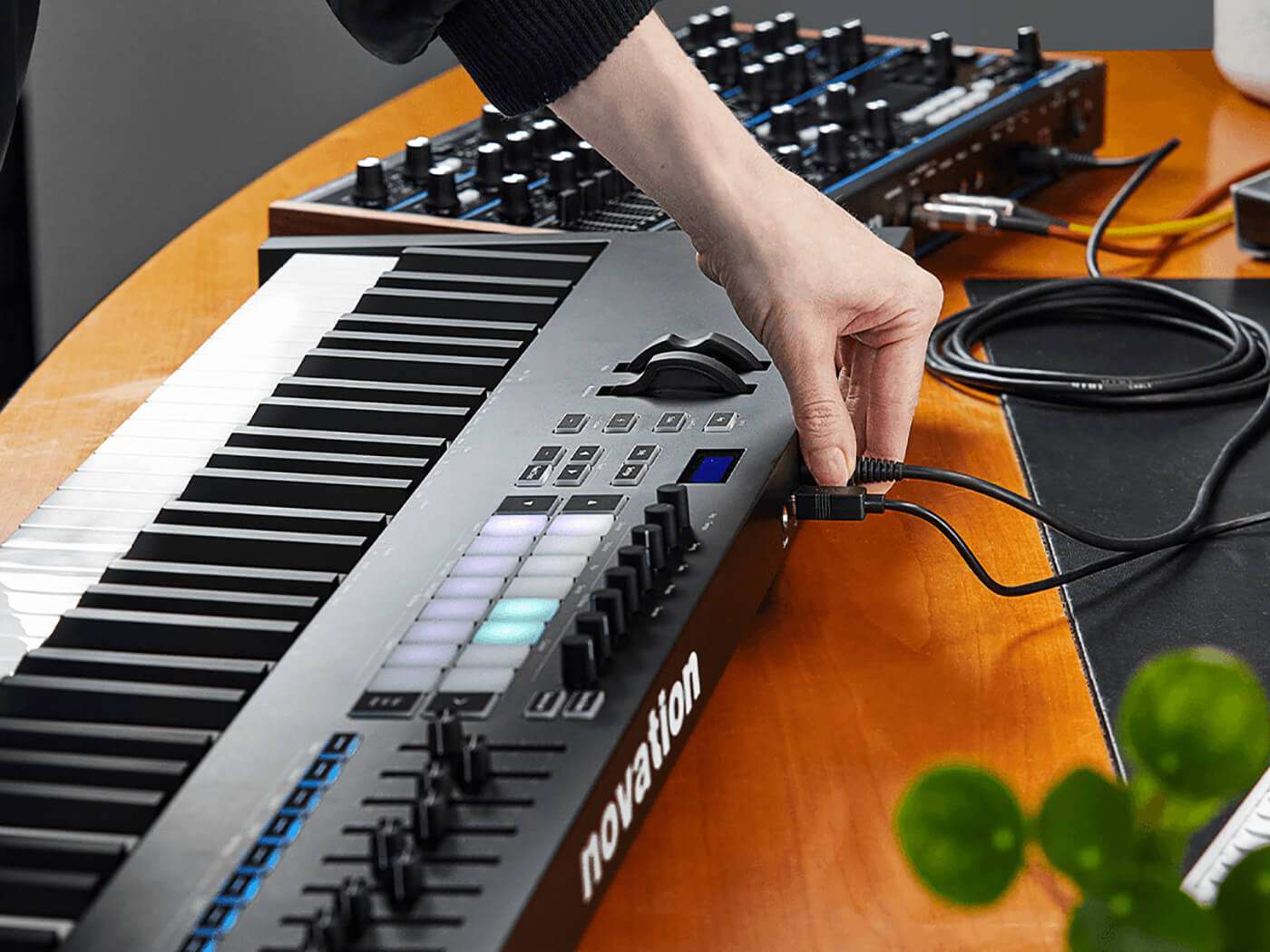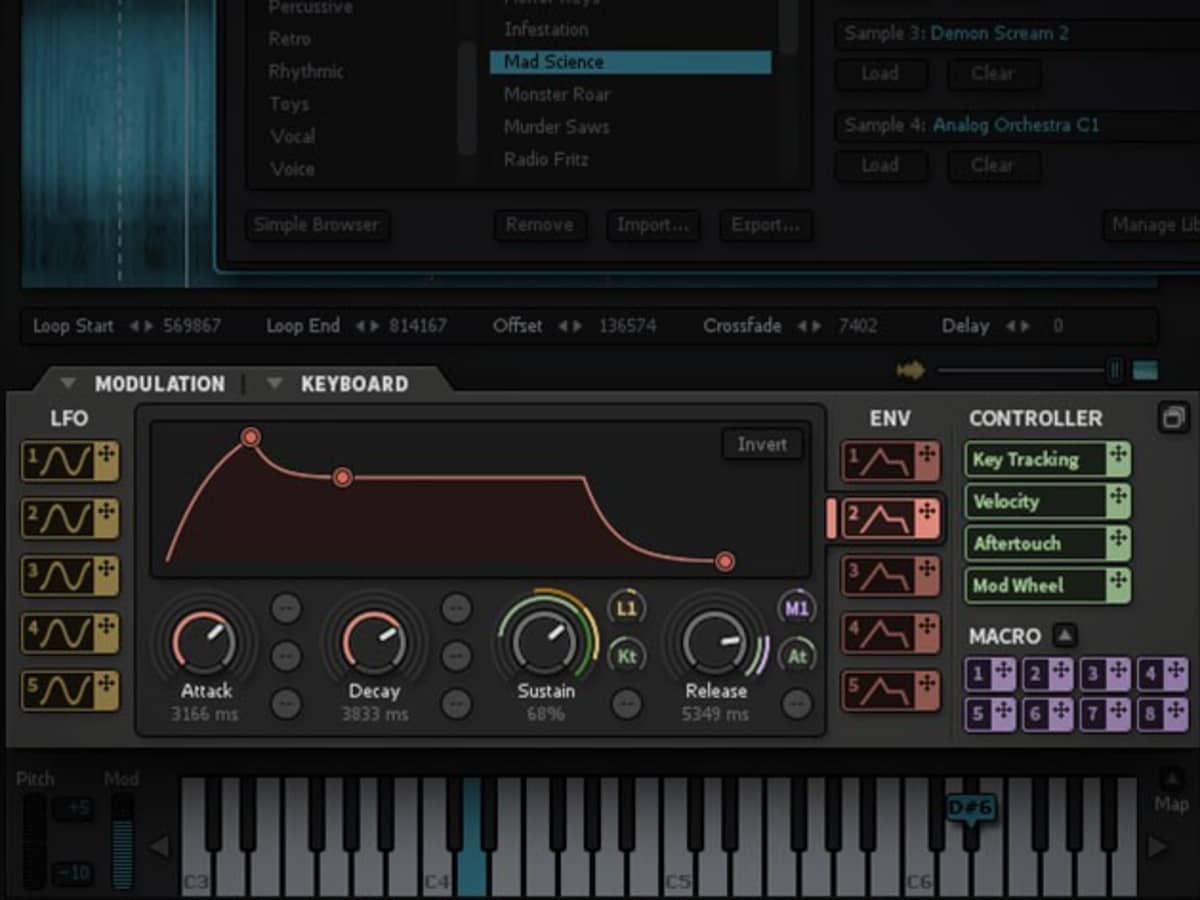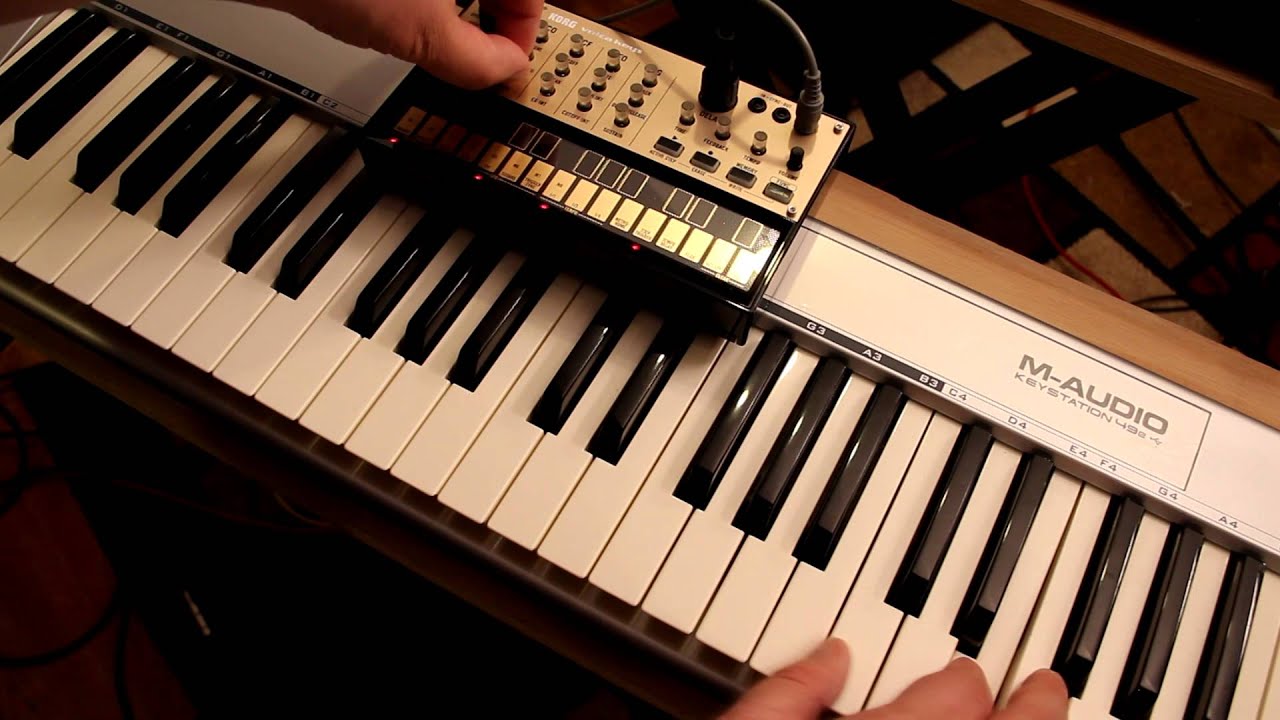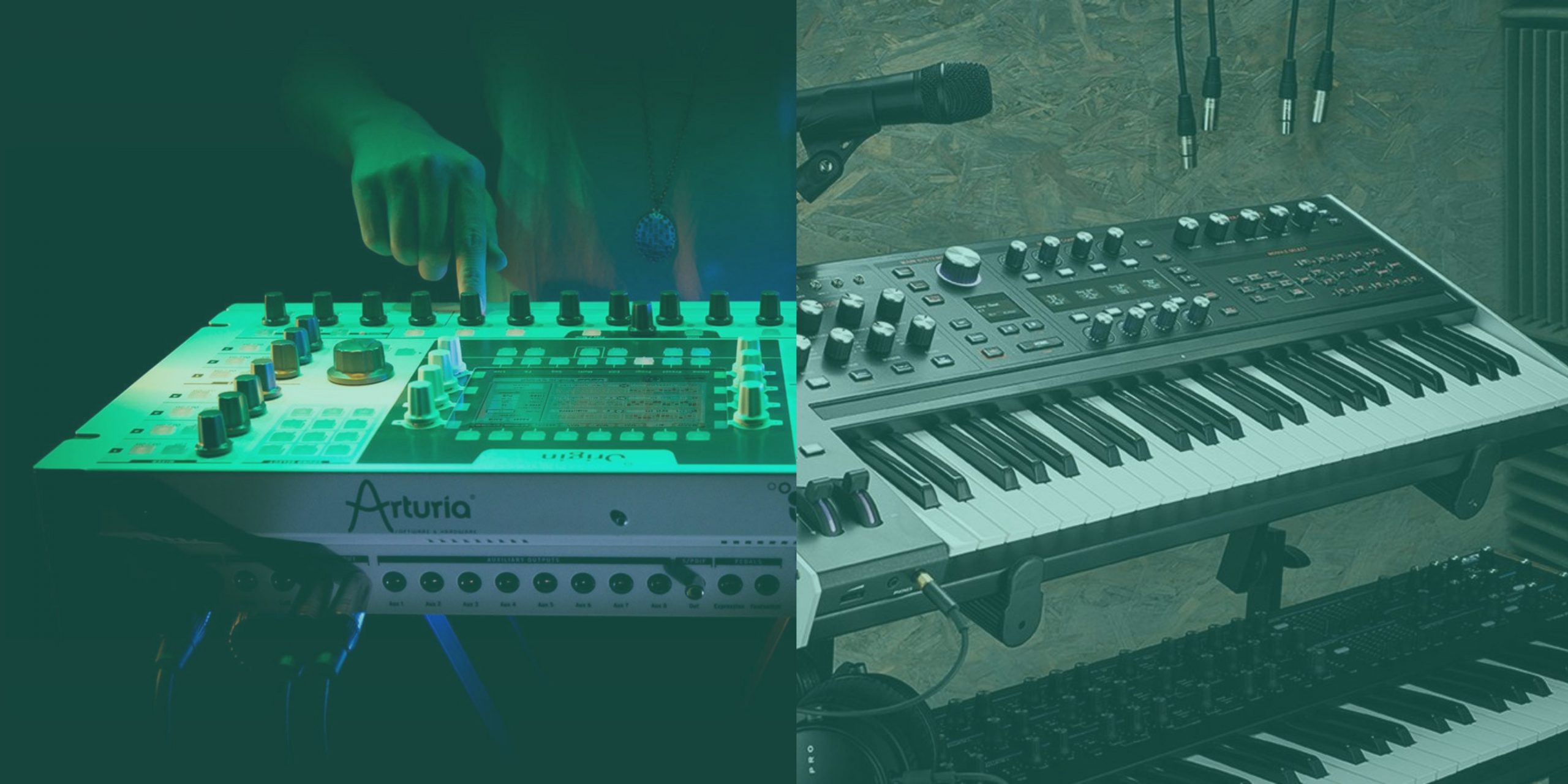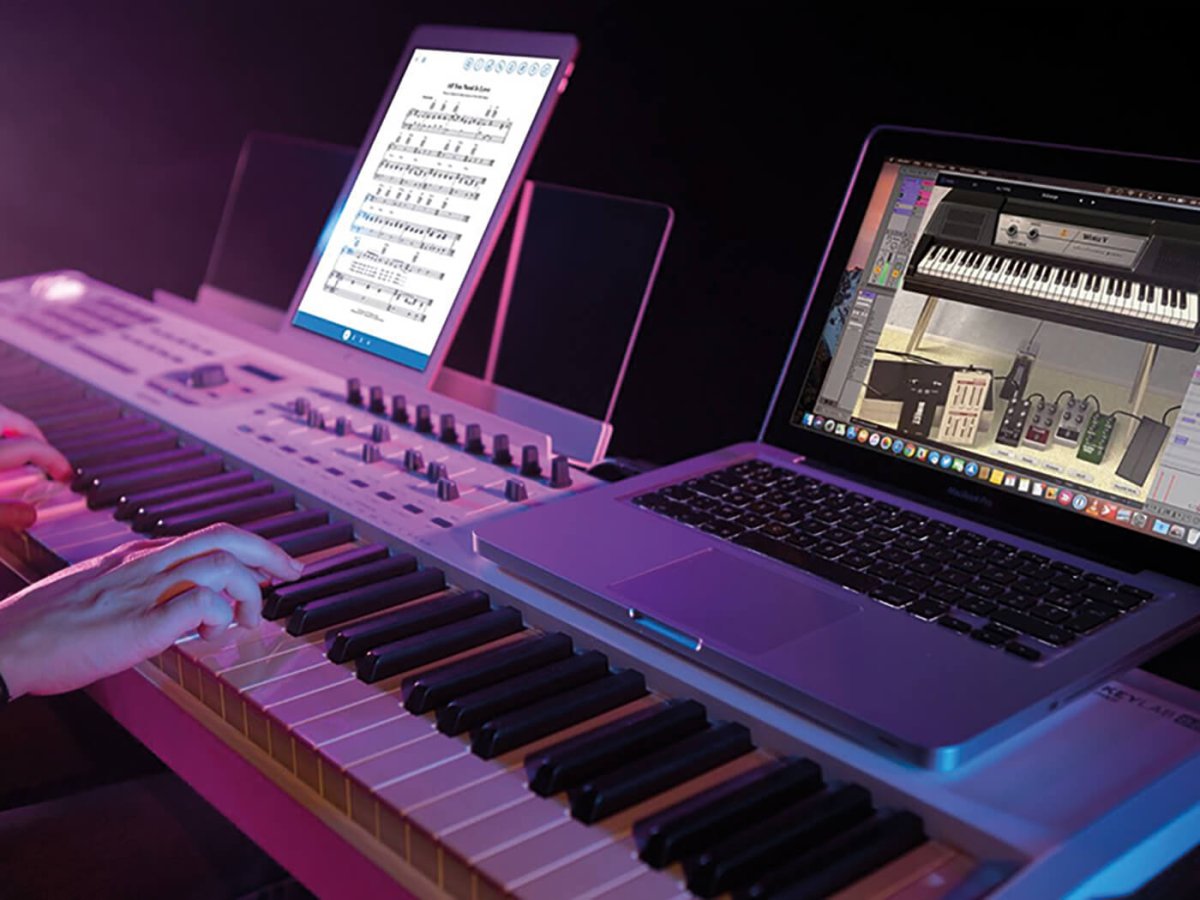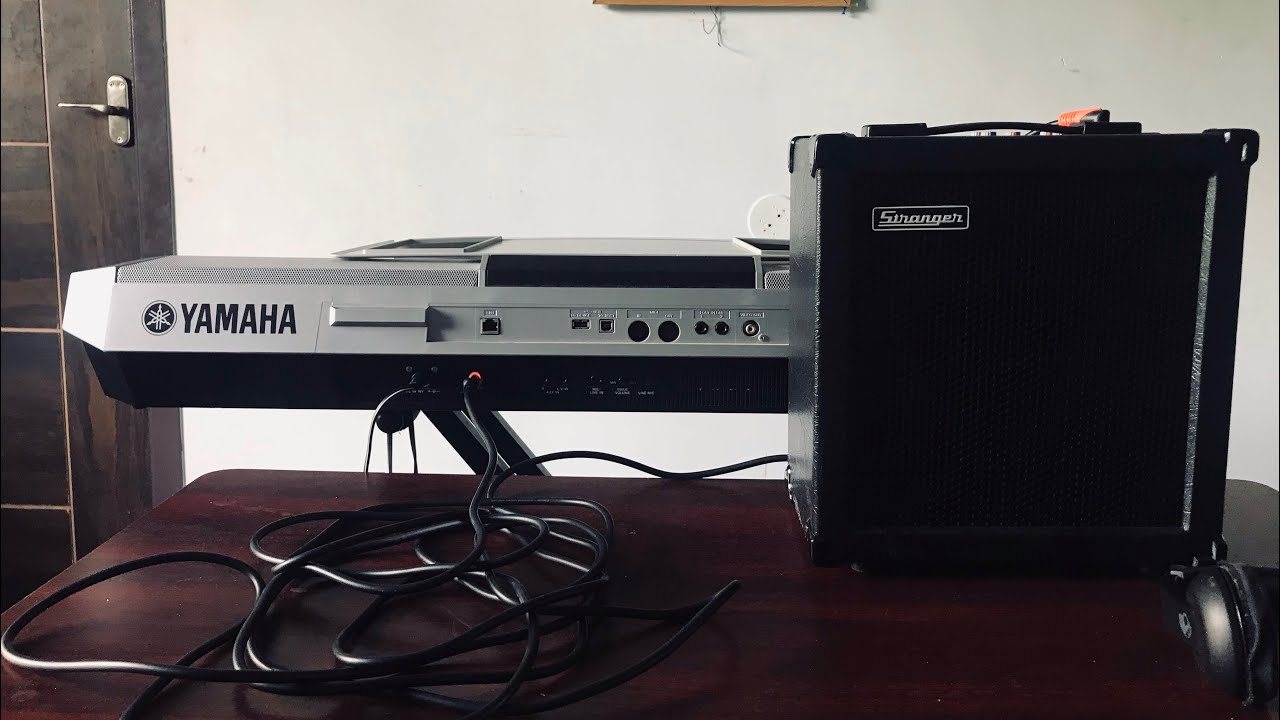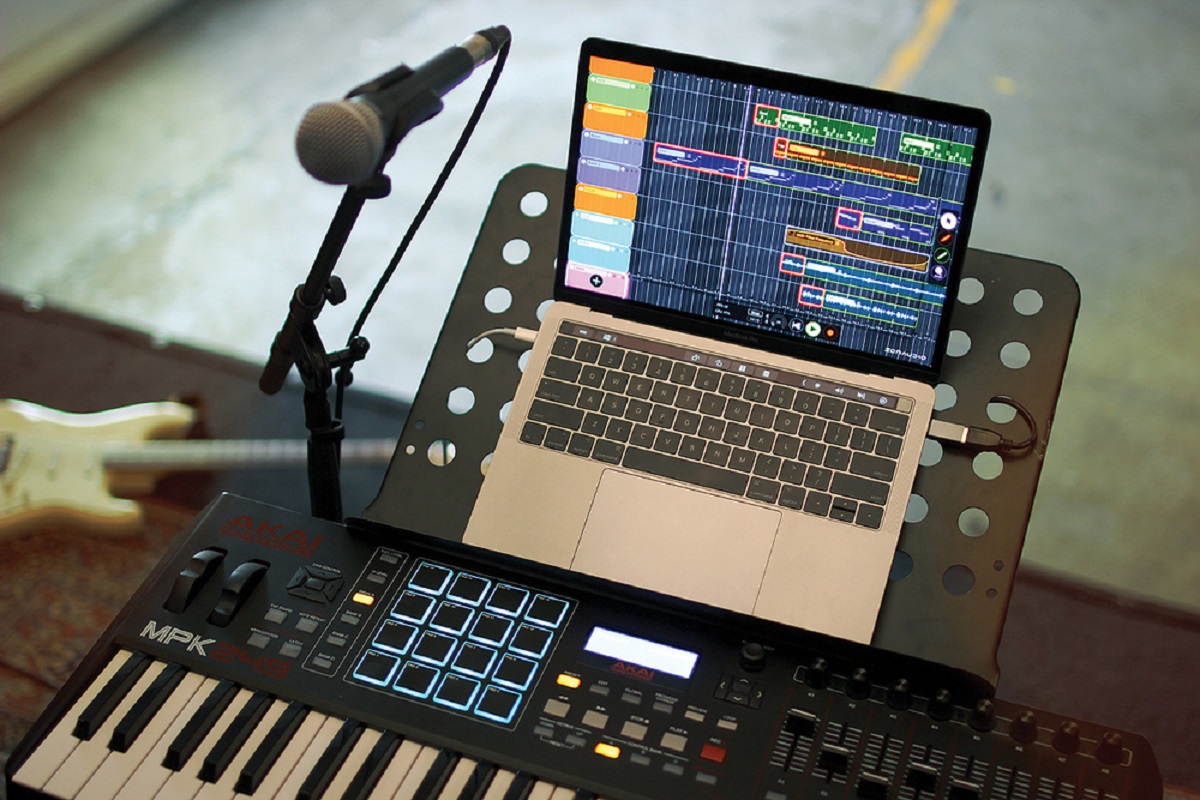Introduction
Understanding the Basics of MIDI Keyboards and VCV
If you're an electronic music enthusiast or a sound designer, you may already be familiar with the concept of MIDI keyboards and the groundbreaking VCV Rack software. MIDI, which stands for Musical Instrument Digital Interface, is a universal protocol that allows electronic musical instruments, computers, and other equipment to communicate with one another. On the other hand, VCV Rack is a powerful open-source virtual modular synthesizer that has gained immense popularity among musicians and producers for its flexibility and expansive library of modules.
In this guide, we'll delve into the process of setting up a MIDI keyboard in VCV Rack, enabling you to harness the full potential of both your hardware and software to create captivating music and soundscapes. Whether you're a seasoned musician looking to integrate your MIDI keyboard into your digital workflow or a newcomer eager to explore the possibilities of VCV Rack, this comprehensive tutorial will walk you through the essential steps to seamlessly connect your MIDI keyboard to the VCV Rack environment.
Throughout this tutorial, we'll explore the intricacies of choosing the right MIDI keyboard for your needs, configuring the MIDI input in VCV Rack, and assigning MIDI controls to the diverse array of modules available in the software. By the end of this guide, you'll be equipped with the knowledge and confidence to incorporate your MIDI keyboard into your VCV Rack projects, unlocking a world of creative possibilities and sonic exploration.
So, let's embark on this journey and unravel the seamless integration of MIDI keyboards in VCV Rack, empowering you to elevate your music production and sound design capabilities. Whether you're aiming to craft melodic compositions, experimental soundscapes, or intricate rhythmic patterns, the fusion of MIDI keyboards and VCV Rack holds boundless potential for sonic innovation and artistic expression.
Choosing the Right MIDI Keyboard
When selecting a MIDI keyboard for integration with VCV Rack, it’s essential to consider several key factors to ensure seamless compatibility and an optimal creative experience. The market offers a wide range of MIDI keyboards, each with unique features and capabilities, catering to diverse musical preferences and production requirements. Here are crucial aspects to contemplate when choosing the right MIDI keyboard for your VCV Rack setup:
- Key Count and Size: The number and size of keys on a MIDI keyboard significantly impact playability and musical expression. Full-size keyboards with 61 or 88 keys provide a piano-like experience, ideal for pianists and composers seeking expansive range and nuanced dynamics. Compact MIDI keyboards with 25 or 49 keys are well-suited for portability and space-constrained setups, making them popular among electronic music producers and performers.
- Key Action and Sensitivity: Consider the type of key action that aligns with your playing style and preferences. Weighted keys replicate the feel of an acoustic piano, offering enhanced tactile feedback and dynamic control, while synth-action keys are lighter and more responsive, suited for rapid note triggering and expressive performance techniques. Additionally, velocity-sensitive keys enable nuanced dynamics, allowing for natural and emotive musical articulation.
- Additional Controls and Features: Many MIDI keyboards integrate additional controls such as knobs, sliders, and pads, empowering users to manipulate parameters, trigger samples, and navigate their software environment with tactile precision. These features enhance workflow efficiency and creative versatility, enabling seamless interaction with VCV Rack’s modular ecosystem and facilitating intuitive sound shaping and performance.
- Connectivity and Integration: Ensure that the MIDI keyboard offers seamless integration with your computer and VCV Rack setup. USB MIDI connectivity simplifies the connection process, eliminating the need for external MIDI interfaces and streamlining the configuration of MIDI input within VCV Rack. Furthermore, MIDI keyboards equipped with MIDI DIN ports provide flexibility for connecting to external hardware synthesizers and sound modules, expanding your sonic palette and performance possibilities.
- Aftertouch and Expression Capabilities: Explore MIDI keyboards that feature aftertouch, a pressure-sensitive functionality that enables expressive control over parameters such as vibrato, filter cutoff, and modulation depth. Aftertouch enhances the depth and nuance of performances, allowing for dynamic and emotive musical expression. Additionally, MIDI keyboards with assignable expression inputs accommodate external pedals and controllers, further augmenting the scope of creative expression and performance articulation.
By carefully evaluating these considerations and aligning them with your musical preferences, production workflow, and performance aspirations, you can select a MIDI keyboard that seamlessly integrates with VCV Rack, empowering you to unleash your musical creativity and explore the boundless sonic possibilities offered by the virtual modular environment.
Setting Up the MIDI Keyboard in VCV
Once you’ve chosen the ideal MIDI keyboard for your creative endeavors, the next crucial step involves setting it up within the VCV Rack software environment. This process enables you to establish a seamless connection between your MIDI keyboard and VCV Rack, empowering you to harness the expressive capabilities of your hardware instrument while leveraging the extensive sonic palette and modular flexibility of VCV Rack. Here’s a comprehensive guide to setting up your MIDI keyboard in VCV Rack:
- Connecting the MIDI Keyboard: Begin by connecting your MIDI keyboard to your computer using a USB cable, ensuring a stable and reliable connection. If your MIDI keyboard features MIDI DIN ports, you can utilize a MIDI interface to connect it to your computer’s MIDI input or a compatible audio interface with MIDI connectivity.
- Launching VCV Rack: Open the VCV Rack software on your computer, initiating the virtual modular environment where you’ll integrate your MIDI keyboard to interact with the diverse array of modules and sonic possibilities.
- Accessing the MIDI Settings: Navigate to the “Rack” menu within VCV Rack and select “Preferences” to access the settings panel. Locate the “MIDI” or “MIDI Input” tab, where you can configure the MIDI input settings for seamless integration of your MIDI keyboard.
- Configuring MIDI Input: Within the MIDI input settings, identify your MIDI keyboard from the list of available devices. Enable the MIDI input for your keyboard, ensuring that VCV Rack recognizes and receives MIDI data from your instrument. Additionally, you can specify the MIDI channel and other relevant parameters to tailor the MIDI input to your specific performance and production requirements.
- Verifying MIDI Input: To confirm that your MIDI keyboard is successfully integrated, play the keys or trigger the controls on your instrument while observing the MIDI input indicators within VCV Rack. You should see visual feedback or activity corresponding to the MIDI data transmitted from your keyboard, indicating that the connection is established and operational.
- Testing MIDI Response: Test the responsiveness and accuracy of the MIDI input by playing notes, triggering modulation, or manipulating controls on your MIDI keyboard. Verify that VCV Rack accurately interprets and responds to your performance gestures, ensuring that the MIDI data is seamlessly translated into expressive musical and sonic actions within the virtual modular environment.
By following these steps, you can effectively set up your MIDI keyboard in VCV Rack, merging the tactile expressiveness of your hardware instrument with the boundless creative potential of modular synthesis. This integration paves the way for immersive sonic exploration, live performance capabilities, and seamless interaction with VCV Rack’s extensive library of modules, empowering you to craft captivating soundscapes and musical compositions with unparalleled depth and expressive nuance.
Configuring the MIDI Input in VCV
Once your MIDI keyboard is physically connected to your computer and recognized within the VCV Rack software, configuring the MIDI input settings is essential to ensure seamless integration and optimal performance. By fine-tuning the MIDI input parameters within VCV Rack, you can customize the behavior of your MIDI keyboard, assign specific functions to its controls, and establish a cohesive interaction between your hardware instrument and the virtual modular environment. Here’s a detailed guide to configuring the MIDI input in VCV Rack:
- Accessing MIDI Input Settings: Within the VCV Rack interface, navigate to the “Rack” menu and select “MIDI Mapping” or “MIDI Settings” to access the MIDI input configuration panel. This interface allows you to assign MIDI controls, map parameters to your keyboard’s knobs and sliders, and customize the MIDI input behavior according to your creative and performance preferences.
- Mapping MIDI Controls: Identify the parameters, modules, or functions within VCV Rack that you intend to control using your MIDI keyboard. This could include oscillator frequencies, filter cutoffs, envelope settings, modulation depths, or any other assignable parameters within the modular environment. By mapping these controls to your MIDI keyboard, you can manipulate and modulate them in real time, infusing your performances and compositions with dynamic expression and sonic versatility.
- Assigning MIDI Channels: If your MIDI keyboard supports multiple MIDI channels, you can assign specific modules or instruments within VCV Rack to respond to distinct MIDI channels, enabling independent control and modulation of different sonic elements. This flexibility allows for intricate layering, expressive polyphony, and nuanced manipulation of diverse sound sources, enriching your musical compositions and performances.
- Calibrating MIDI Response: Fine-tune the sensitivity, range, and response curves of your MIDI keyboard’s controls within the VCV Rack interface. This calibration process ensures that your performance gestures are accurately translated into musical and sonic actions, providing a seamless and intuitive interaction between your hardware instrument and the virtual modular environment.
- Testing MIDI Assignments: Verify the effectiveness of your MIDI input configurations by engaging in real-time performance and experimentation. Test the mapped controls, explore the assigned parameters, and assess the responsiveness and musical impact of your MIDI keyboard within the VCV Rack environment, refining the configurations as needed to align with your creative vision and expressive intentions.
By meticulously configuring the MIDI input in VCV Rack, you can unlock the full potential of your MIDI keyboard, leveraging its tactile controls and expressive capabilities to sculpt intricate soundscapes, shape dynamic performances, and delve into the boundless sonic possibilities offered by the modular synthesis paradigm. This seamless integration empowers you to engage with VCV Rack in a deeply immersive and expressive manner, transcending traditional musical boundaries and embarking on a journey of sonic innovation and artistic exploration.
Assigning MIDI Controls to Modules
Within the VCV Rack modular environment, the process of assigning MIDI controls to modules is a pivotal step that amplifies the expressive potential of your MIDI keyboard, enabling real-time manipulation of diverse parameters and sonic elements. By mapping MIDI controls to specific modules and functions within VCV Rack, you can infuse your performances and compositions with dynamic modulation, nuanced timbral shifts, and expressive articulation, transcending the traditional confines of static sound generation. Here’s a comprehensive guide to assigning MIDI controls to modules in VCV Rack:
- Identifying Modulatable Parameters: Explore the modules and instruments within VCV Rack to identify the parameters, knobs, sliders, and functions that are conducive to MIDI control and modulation. This could encompass oscillator frequencies, filter cutoffs, envelope settings, LFO rates, effect parameters, and any other adjustable elements that contribute to the sonic character and expressive range of the modules.
- Accessing Module Parameters: Within each module’s interface in VCV Rack, locate the parameters or controls that you intend to modulate using your MIDI keyboard. These elements may be represented as knobs, sliders, input fields, or dedicated modulation inputs, offering a diverse array of sonic shaping possibilities that can be dynamically influenced by MIDI control signals.
- Mapping MIDI Controls: Access the MIDI mapping interface within VCV Rack to assign specific MIDI controls from your keyboard to the modulatable parameters of the desired modules. This process involves linking MIDI note data, continuous controller messages, aftertouch, and other MIDI signals to the targeted parameters, establishing a direct and intuitive connection between your performance gestures and the sonic behavior of the modules.
- Calibrating Modulation Ranges: Fine-tune the modulation ranges and scaling of the assigned MIDI controls to align with your desired expressive range and musical context. By adjusting the minimum and maximum modulation values, response curves, and scaling parameters, you can tailor the MIDI modulation to suit the sonic dynamics, articulation nuances, and performance intricacies inherent in your musical compositions and improvisations.
- Real-Time Modulation: Engage in real-time performance and experimentation to explore the impact of the assigned MIDI controls on the modules and instruments within VCV Rack. Manipulate the mapped parameters using your MIDI keyboard, triggering sonic transformations, shaping timbral evolutions, and sculpting expressive sonic narratives that reflect your artistic vision and emotive intentions.
By assigning MIDI controls to modules in VCV Rack, you empower your MIDI keyboard to become a dynamic and versatile interface for sculpting sound, shaping musical expressions, and infusing your compositions with emotive depth and sonic intricacies. This seamless integration of hardware and software engenders a symbiotic relationship between tactile performance gestures and modular sonic exploration, fostering a creative synergy that transcends traditional musical paradigms and invites you to embark on a journey of boundless sonic innovation and expressive artistry.
Conclusion
As we conclude this comprehensive guide to setting up a MIDI keyboard in VCV Rack, we’ve embarked on a journey that illuminates the seamless integration of hardware and software, empowering you to unlock a world of sonic possibilities and expressive creativity. By carefully selecting the right MIDI keyboard for your needs, configuring its integration within VCV Rack, and assigning MIDI controls to the diverse array of modules, you’ve established a dynamic and immersive environment where tactile performance gestures and modular sonic exploration converge to shape captivating musical compositions, experimental soundscapes, and expressive sonic narratives.
Through the fusion of MIDI keyboards and VCV Rack, you’ve harnessed the expressive capabilities of your hardware instrument to engage with the boundless sonic palette and modular flexibility of the software, transcending traditional musical boundaries and embarking on a journey of sonic innovation and artistic exploration. The seamless connection between your MIDI keyboard and VCV Rack has facilitated a cohesive interaction, enabling you to sculpt intricate soundscapes, shape dynamic performances, and delve into the expressive nuances of modular synthesis with unparalleled depth and emotive articulation.
As you continue to explore the creative potential of this integration, we encourage you to experiment, improvise, and push the boundaries of sonic expression, leveraging your MIDI keyboard as a versatile and dynamic interface for real-time modulation, sonic sculpting, and emotive performance. The synergy between tactile performance gestures and modular sonic exploration invites you to transcend conventional musical paradigms, inviting you to embark on a journey of boundless sonic innovation and expressive artistry.
In this ever-evolving landscape of electronic music production and sound design, the integration of MIDI keyboards in VCV Rack serves as a testament to the boundless potential of technology and creativity, fostering a symbiotic relationship between hardware instruments and software environments. As you continue to refine your skills, expand your sonic horizons, and craft compelling musical experiences, may this integration serve as a catalyst for endless inspiration, artistic exploration, and sonic innovation.







